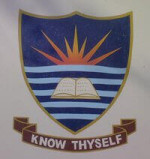

Assignment 2 4G Wireless Networks
The 3rd Generation Partnership Project (3GPP) developed the 3GPP LongTerm Evolution (LTE) standard for wireless communications technology. It is regarded as an evolution of the Global System for Mobile Communication (GSM), the Universal Mobile Telecommunications Systems (UMTS), and other standards. It is also known as the 4G LTE. The competition among the carriers to support 4G LTE networks has been very fierce as evidenced by TV commercials targeting smartphone users. Many smartphones run on 3G networks.
Write a four to five (45) page paper in which you
Your assignment must follow these formatting requirements
The specific course learning outcomes associated with this assignment are


Compare and Contrast 3G and 4G Wireless Networks
The comparison of 3G and 4G wireless networks can be broken down into four main areas of concern when deciding on the more future-oriented 4G compared to the more established 3G network. The first areas examined are service and applications. Third-generation (3G) networks consist of CDMA 2000, UMTS, WCDMA, and various others. Fourth-generation (4G) technologies include WiMAX, HSPA+21/42, and LTE, of which many consider LTE to be the only “true” 4G network (Segan, 2013). The introduction of 3G technologies heralded a wide range of possibilities to include the ability for user to wirelessly stream audio, video, visual calling and conferencing, and various mobile multimedia functions to include more streamlined E-mail and general web browsing, online banking, basic video games on demand, mobile TV, and location-based services (4Gon Solutions, 2012). 4G application offerings include four main categories: Localized/Personalized Information, Communications, Organizational, and Entertainment (M-Indya, 2012). Localized/Personalized Information applications will offer users the ability to browse various news outlets, more accurate and improved locational servicers, more enhance mobile commerce (i.e. mobile check depositing, investment services), along with various travel services such as flight, hotel, and rental car accommodations as well as public transportation tracking information. The communications applications offered include greatly enhanced versions of short messaging service (SMS), e-mail capabilities, and video messaging experiences. Organizational applications include location-based interactive calendars and alerts such as Apple Inc.’s Push Notification Service, and cloud-based to do lists. Finally, entertainment applications are wide-ranging and can include music streaming via mobile radio applications (e.g. Pandora, Spotify), video streaming applications (e.g. Netflix, Hulu), gaming, and more capable video chatting.
While many of the same services and applications between 3G and 4G may indeed be very similar, within the network architecture lies some major differences. 3G architecture still uses the somewhat antiquated wide area cell-based network with the same circuit and packet switching design subsystem that has been used for some time now in telephone systems. This system tends to rely heavily on satellite connections that in turn communicate with telecommunication towers scattered throughout an area. This includes various processes and subsequent delays including the routing of data from a cell site to a centralized switching office that in turn can impede resources until the connection ceases. On the other hand, 4G networks are hybrid systems consisting of the integration of both LAN (Wi-Fi, Bluetooth) and the wide area cell-based network that 3G offers (Mobileinfo.com, 2011). 4G technologies do not contain the same circuit subsystem present in 3G rather they are completely digital with a packetized Internet Protocol (IP) and voice. With the abandonment of circuit switching even for voice and video calls, mobile companies will be able to condense more conversations and data into the same bandwidth as used in 3G (Kumar, et al, 2013).
The next major difference between these two technologies is the variation in their data throughputs or the rate of successful delivery across a networ...


